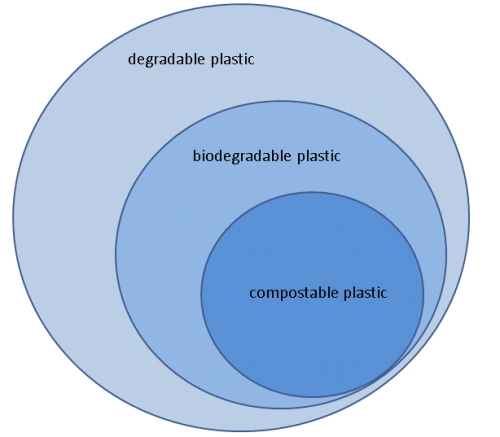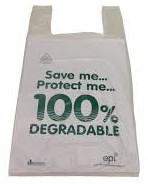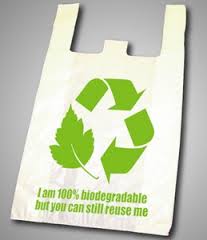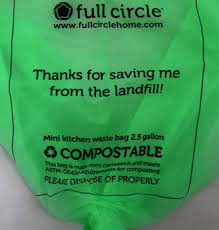
- Sustainable Planet -
- 5mins -
- 1,135 views
What’s the difference between degradable, biodegradable and compostable plastic bags?
Three terms get used a lot when people talk about plastics, but do you know how they are related to each another, and how they differ?
Degradable, bio-degradable or compostable: which bag is better…or worse?
Are you trying to make more eco-friendly choices when you shop, but so confused by all the terminology that is thrown about to try to convince you something is ‘green’? You are not alone – even the people using these terms often don’t really understand what they mean.
The difference between degradable, biodegradable, and compostable
A recent senate inquiry in Australia found that there is some serious confusion among the public surrounding the difference between the kids of plastic bag available. It can be difficult to navigate the minefield of planet-friendly options and terminology, so here’s a handy guide to help you separate what’s truly Eco from what to avoid.

Degradable Plastic:
Things can be photodegradable (broken down by ultraviolet light), oxodegradable (broken down by thermal exposure) or biodegradable (broken down by the action of microorganisms).
These methods will make the bulk of the plastic appear to disappear; however, the small pieces (or even find “sand”) that is produced by this effect is still small pieces of plastic. Nothing has changed. Over a matter of years, it is possible for the pieces to become small enough to be assimilated by microorganisms, but there is still a lot of research that needs to be done to verify how long this might take. In the mean time, they are just very small pieces of plastic.
So be cautious when you see a plastic product that advertises that it is “degradable” but not “biodegradable” or “compostable,” because this is nothing special. The plastic material does not “return to the earth” in any real way. It just gets really, really small.
Source: Green-Plastics.net

Biodegradable Plastic
When something is biodegradable, it means it is degradable, but it also means something more: it means that it can be broken down by the metabolism of micro-organisms.
When a plastic is biodegradable, it can be digested, so that the carbon atoms in the chains of the polymer are broken apart and can actually participate in the creation of other organic molecules. They can be processed by, and become part of, organic living things. This returns them to nature in a very real sense: they become part of the carbon cycle of the ecology of the earth.
Only bioplastics will biodegrade within any reasonable timescale. Petroleum-based plastic that simply breaks down into a fine sand or small pieces still cannot be digested by microorganisms. Perhaps over the time-span of many years, the pieces may get so small that they can be digested by microorganisms. This is currently the focus of a great deal of research and debate, as different groups try to establish how quickly oxo-degradable plastics can be reduced to a form where they are actually biodegradable.
It is also important to note that even some plastics that are made from renewable resources are processed in a way that makes them non-biodegradable. They are still “degradable” but they do not return to the earth, and cannot be processed by microorganisms. That is why the difference between biodegradable plastics, and non-biodegradable plastics, is so important.
Source: Green-Plastics.net

Compostable Plastic:
When something is compostable, it means that it biodegrades, but it also means something more: it will degrade within a certain amount of time, under certain conditions. For many types of bioplastic, it’s possible to say that it will break down “eventually”, but if you seal it in an air-tight room, it could take thousands of years.
The standards organisations that regulate materials have come up with a series of tests and benchmarks, saying that if a biodegradable plastic will completely biodegrade fast enough in a certain type of environment, then it can be labelled “compostable.”
(For more details about what these limits are and how they are measured, check out Green-Plastics.net article: “Bioplastics Standards 101”)
So these three terms aren’t really different “classes” of plastic, in the sense of being separate sets. They are subsets of one another: all compostable plastics are biodegradable, and all biodegradable plastics are degradable. But be wary of people who make claims about the “degradability” of their product: because not all degradable plastics are biodegradable, or compostable.
Source: Green-Plastic.net

Green Plastic Challenge
One of the main problems involved with creating green plastics is the amount of energy needed in production. In some scenarios, the fossil fuel input is more than what it is to create the equivalent in crude oil based plastic product.
All breakdown of the above three kinds of “green” plastics also creates carbon dioxide. We are somewhat caught between a rock and a hard place in this. The compromise appears to be using the plants that the plastic is created from also as an energy source for production.
Instead of carbon emissions being generated from sources sequestered under the ground such as coal and oil, the burning of corn stalks and other plants would not increase net carbon dioxide in the atmosphere, because new plants would absorb an equal amount of the gas.
Source: GreenLivingTips

